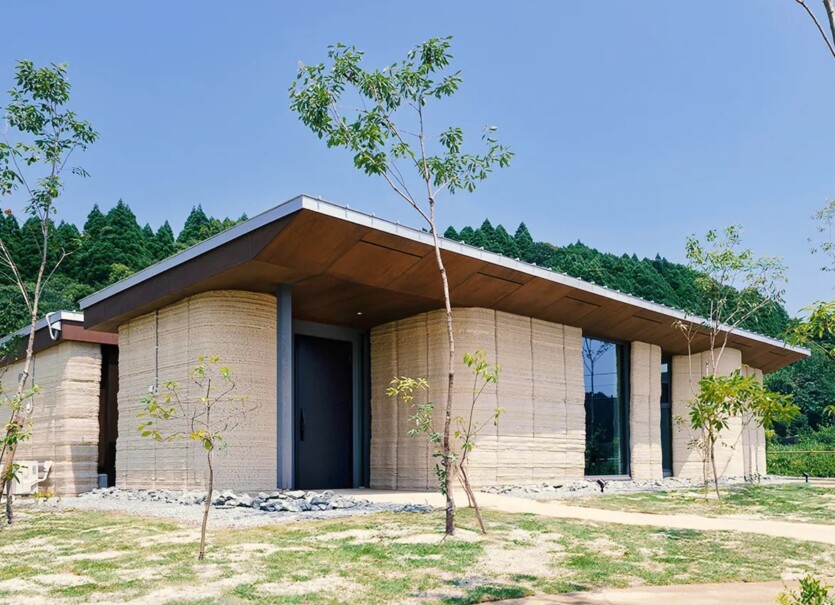
Japanese company Lib Work presents its own technology building houses using 3D printing, in which soil is a key component.
It is noted, that Lib Earth House Construction technology uses 3D printing for large-scale assembly of building blocks. However instead of using cement, to create concrete, the company uses a foamed soil mixture, slaked lime and natural fibers.
It’s a bit like the ancient adobe houses. Such houses are capable of stand for up to 700 years. Lib Work notes, that the structures of buildings built using their technology correspond to the third class of earthquake resistance. In addition, 3D printing capabilities provide architects and designers with free rein in terms of shape design.
The mixture used to make cement consists of 65% soil and sand. The rest is mostly made up of slaked lime and a few percent of natural fibers and other materials.
The company has calculated CO2. According to this information, the use of soil, lime and natural fibers, which are abundant in the environment, and the elimination of cement in the new material will significantly reduce CO2 per house.
According to the Lib Work, the construction of a typical house of the same size will lead to the emission of 45 thousand kg of CO2· This figure is reduced to 22 thousand 434 kg of CO2 for the use of new technology.
Meanwhile, in the Lib Work is not stopping with this development, as they have an ambitious project called the Mars Building Project. The company expects that the key building element on Mars should be the local dust and regolith.
Successful implementation of 3D construction from natural ingredients can be a significant step Lib Work is on its way to implementing an ambitious construction project on Mars. If soil becomes a valuable building material for modern eco-friendly houses printed on a 3D printer, it could change everything and open the way for humanity to colonize other extraterrestrial worlds.
Source: tom’sHardware

Spelling error report
The following text will be sent to our editors: